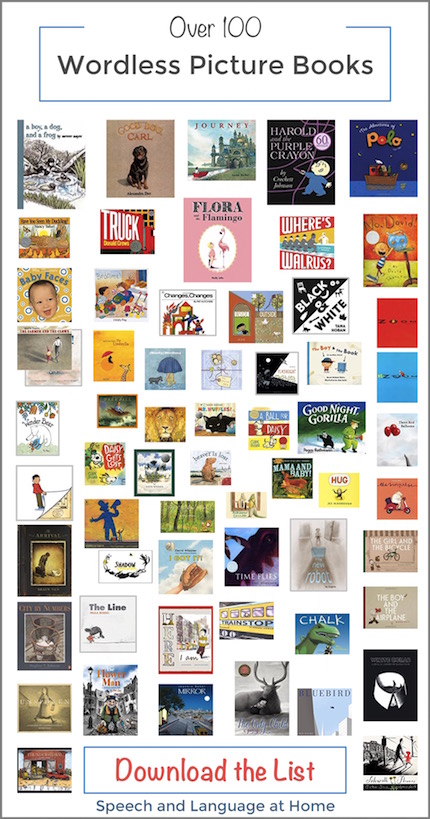Over 100 Wonderful Wordless Picture Books to Boost Your Child's Language
Raise your hand if you like picture books but aren’t quite sure how to read them.
Maybe you have one sitting on your shelf right now.
You haven’t picked it up because:
Having no words feels intimidating
You don’t know what to say
It looks complicated
Bedtime stories should be easy. You just want to pick up a book, read it, and put that kid to bed.
If you don’t know much about picture books they may seem simple or basic.
They are in fact rich with language and an excellent tool for building complex thinking and emotional development.
Here are a few reasons why educators love wordless picture books?
They are great for all ages. You can never be too old or too young to enjoy a wordless picture book.
You tell the story. There is no “right” or “wrong” way to read it.
Struggling readers can feel confident in “reading” a book.
They teach young children that you don’t have to write words to tell a story. Authors can tell a story with pictures too.
Learning to notice nonverbal cues helps develop social-emotional skills.
And why do speech therapists love to get their hands on a great wordless picture book?
They can be used to assess and treat speech and language disorders.
Speech therapists target a variety of goals such as:
Story telling
Building vocabulary
Correcting grammar
Answering simple and complex questions
Making predictions and inferences
Comparing and contrasting
Describing and sequencing events
Practicing speech sounds
Pretty great. Right?
But how to YOU use them at home?
Here are a few tips for reading wordless pictures books:
1. Sit face to face. Sitting in front of your child allows them to watch your mouth make sounds. They can also see your facial expressions as you talk about the book together. Hearing you talk, seeing your face, plus the visuals on the page add up to a lot of rich input.
2. Get noisy (non-talker tip).
Make those animal and vehicle sounds (roar, beep, Zzzzz). You may feel awkward at first, but kids love it. Will your child copy you?
Act out what the characters are doing. For example, point to a sleeping animal, say “Shhh. Sleeping”. Close your eyes and to pretend to sleep.
Point to pictures. Say what it is. Repeat it.
“Dog! Look dog. Woof woof. Dog.”
Again, it feels weird, but kids learn with repetition.
3. Take a picture walk before you get into the story. Flip through the pages together. Talk about what you see. This will set up the story.
Begin by asking, “I wonder what this book is about?”
What does your child notice?
What pictures are they interested in?
Do they have a personal experience they can connect to?
4. Let your child lead. Don’t feel pressured to tell the story. See what story your child makes up. If they need a little help… (see #5)
5. Say what you are thinking. (This is called metacognition) Tell your child what is going on in your head.
“I bet he’s gonna get wet.”
“I think that dog looks hungry.”
“I’m not sure what his mom will say.”
Follow up with “What do you think?”
Wordless picture books give parents a great opportunity to talk about feelings and problem solving.
Is your child able to read the characters emotions?
Do they recognize the problem?
Can they figure out what the solution was?
Now that you are feeling more confident about picture books, go back and read them again. Part of the fun is never telling the same story twice. You’ll be amazed at how your child’s understanding and expressive language will develop over time.
Ok, so now what book to choose?
Maybe you received Good Night, Gorilla as a baby shower gift. Or you loved Pancakes for Breakfast as a kid. Start there.
If you’re looking for more, here is a list of over 100 more wordless picture books.
(The list contains Amazon affiliate links. Read more below)
Wordless Picture Books for Toddlers
Wordless Picture Books for Older Readers
Wordless Picture Books with Adventure
Wordless Picture Books with Animals
Wordless Picture Books for Special Interests
Download a list of all these books (+40 more)
Already on my Friend Mail list?
Read more about wordless picture books.
Reading Rockets (handout version)
How to read a wordless picture book (podcast episode)
If you decide to purchase a book through these links I will receive a small commission from Amazon. There is no additional charge to you. Thank you to those that make these purchases. I hope providing you this resource saved you some time researching books. Amazon makes shopping so easy that you can just cross that errand off your "to do" list. Enjoy the books and have a blast reading them with your kids/students.







